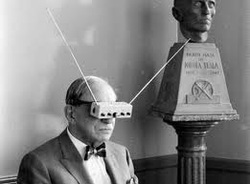Major Biographies
Paul Conway
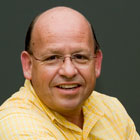
"BA in history, Indiana University; MA in history and administration of archives, and Ph.D. in information and library studies, University of Michigan
Paul Conway is an associate professor in the School of Information. He is the faculty coordinator of the Preservation of Information specialization in the Master of Science in Information program.
Conway has extensive teaching and administrative experience in the archives and preservation professions. Before coming to SI, Conway served as director for information technology services and director for digital asset initiatives at Duke University.
Conway is an experienced educator whose courses will strengthen and extend SI's nationally ranked specialization in Archives and Records Management. Over the past decade, he has developed and taught courses on preservation management, archival approaches to digital content management, and digital preservation, as well as dozens of specialized workshops and seminars on information technology issues.
Conway's research interests include the challenges of representing and interpreting visual and textual resources in digital form, extracting knowledge from large-scale image databases, and modeling incentive systems for digital preservation, particularly in the context of emerging interdisciplinary scholarship in the humanities.
Conway has made major contributions over the past 30 years to the literature on archival users and use, preservation management, and digital imaging technologies. Prior to his appointment at Duke, Conway headed the Preservation Department at Yale University Library for nine years. He is an accomplished leader in the fields of archives and preservation and has held positions at the National Archives and Records Administration and the Society of American Archivists. He began his career as an archivist at the Gerald R. Ford Library on the U-M North Campus.
Conway completed the first Research Libraries Leadership Fellowship program, developed by the Association of Research Libraries. In 2005, Conway received the American Library Association's Paul Banks and Carolyn Harris Preservation Award for his contributions to the preservation field. He currently serves on the Editorial Board of American Archivist and on the Preservation Advisory Committee of the Council on Library and Information Resources."
University of Michigan. (n. d.). Retrieved from http://www.si.umich.edu/people/faculty-detail.htm?sid=138
Paul Conway is an associate professor in the School of Information. He is the faculty coordinator of the Preservation of Information specialization in the Master of Science in Information program.
Conway has extensive teaching and administrative experience in the archives and preservation professions. Before coming to SI, Conway served as director for information technology services and director for digital asset initiatives at Duke University.
Conway is an experienced educator whose courses will strengthen and extend SI's nationally ranked specialization in Archives and Records Management. Over the past decade, he has developed and taught courses on preservation management, archival approaches to digital content management, and digital preservation, as well as dozens of specialized workshops and seminars on information technology issues.
Conway's research interests include the challenges of representing and interpreting visual and textual resources in digital form, extracting knowledge from large-scale image databases, and modeling incentive systems for digital preservation, particularly in the context of emerging interdisciplinary scholarship in the humanities.
Conway has made major contributions over the past 30 years to the literature on archival users and use, preservation management, and digital imaging technologies. Prior to his appointment at Duke, Conway headed the Preservation Department at Yale University Library for nine years. He is an accomplished leader in the fields of archives and preservation and has held positions at the National Archives and Records Administration and the Society of American Archivists. He began his career as an archivist at the Gerald R. Ford Library on the U-M North Campus.
Conway completed the first Research Libraries Leadership Fellowship program, developed by the Association of Research Libraries. In 2005, Conway received the American Library Association's Paul Banks and Carolyn Harris Preservation Award for his contributions to the preservation field. He currently serves on the Editorial Board of American Archivist and on the Preservation Advisory Committee of the Council on Library and Information Resources."
University of Michigan. (n. d.). Retrieved from http://www.si.umich.edu/people/faculty-detail.htm?sid=138
Ian H. Witten

Ian Witten is a computer science professor in the department of computer science at the University of Waikato in New Zealand. He is the founder of the New Zealand Digital Library Research Project and has been awarded the IFIP Namur Award for his contributions to the field of information technology. According to his website his interests include, “Greenstone DL Software, New Zealand Digital Library, search engines and society, text mining, keyphrase extraction, machine learning, information retrieval, and my graduate students.”
Witten provides a link to his very extensive resume on his website. http://www.cs.waikato.ac.nz/~ihw/resume.html
Published Works
Boddie, S., Thomson, J., Bainbridge, D. and Witten, I.H. (2008) “Coping with very large digital collections using Greenstone.” Proc European Conference on Digital Libraries Workshop on Very Large Digital Libraries, Aarhus, Denmark, September.
This paper discusses the Greenstone Digital Library software and its uses for building very large collections.
Liesaputra, V., Witten, I.H. and Bainbridge, D. (2009) “Searching in a book.” European Conference on Digital Libraries, pp. 442-446, Corfu, Greece, September/October.
This paper discusses accessibility in digital libraries in comparison to physical books. The authors also discuss full text search tools and search interfaces.
Witten, I.H. (2003) “Customizing digital library interfaces with Greenstone.” IEEE-CS Technical Committee on Digital Libraries Bulletin, 1(1), Summer. published online http://www.ieee-tcdl-org/Bulletin/summer2003/.
In this article, Witten discusses the Greenstone Digital Library software and its capabilities for users. He also provides readers with examples of how the Greenstone software is customizable to a large variety of collections and situations.
Ian Witten provides a full list of his published works on his website: http://www.cs.waikato.ac.nz/~ihw/publications.html
Witten, I.H. (n.d.) retrieved from http://www.cs.waikato.ac.nz/~ihw/
Witten provides a link to his very extensive resume on his website. http://www.cs.waikato.ac.nz/~ihw/resume.html
Published Works
Boddie, S., Thomson, J., Bainbridge, D. and Witten, I.H. (2008) “Coping with very large digital collections using Greenstone.” Proc European Conference on Digital Libraries Workshop on Very Large Digital Libraries, Aarhus, Denmark, September.
This paper discusses the Greenstone Digital Library software and its uses for building very large collections.
Liesaputra, V., Witten, I.H. and Bainbridge, D. (2009) “Searching in a book.” European Conference on Digital Libraries, pp. 442-446, Corfu, Greece, September/October.
This paper discusses accessibility in digital libraries in comparison to physical books. The authors also discuss full text search tools and search interfaces.
Witten, I.H. (2003) “Customizing digital library interfaces with Greenstone.” IEEE-CS Technical Committee on Digital Libraries Bulletin, 1(1), Summer. published online http://www.ieee-tcdl-org/Bulletin/summer2003/.
In this article, Witten discusses the Greenstone Digital Library software and its capabilities for users. He also provides readers with examples of how the Greenstone software is customizable to a large variety of collections and situations.
Ian Witten provides a full list of his published works on his website: http://www.cs.waikato.ac.nz/~ihw/publications.html
Witten, I.H. (n.d.) retrieved from http://www.cs.waikato.ac.nz/~ihw/
Biographies
Francine Berman
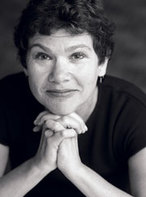
Francine Berman is currently the “vice president responsible for advancing the research enterprise across the full range of academic disciplines and interdisciplinary activities” at Rensselaer Polytechinic Institute in Troy, NY. “Previous to her appointment by Rensselaer, Francine Berman was High Performance Computing Endowed Chair at the University of California, San Diego (UCSD) and director of the San Diego Supercomputer Center. Berman is widely recognized as a pioneer in the effort to build a stronger digital infrastructure in the United States, known as a cyberinfrastructure, and has been named as a technology leader by Newsweek, BusinessWeek, and IEEE Spectrum.” She is also a member of the Blue Ribbon Task Force.
Francine Berman. (n. d.) Rensselaer Polytechnic Institute. Retrieved from
http://www.rpi.edu/president/cabinet/berman.html.
Members. (n. d.) Blue ribbon task force. Retrieved from http://brtf.sdsc.edu/members.html.
Francine Berman. (n. d.) Rensselaer Polytechnic Institute. Retrieved from
http://www.rpi.edu/president/cabinet/berman.html.
Members. (n. d.) Blue ribbon task force. Retrieved from http://brtf.sdsc.edu/members.html.
Howard Besser
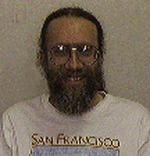
Howard Besser is known as one of OCLC’s digital pioneers (OCLC). “He was a member of the group that created the Dublin Core metadata standard (1995), and was the lead convenor for the 3rd major Dublin Core Meeting (1996). He was a part of a small team that designed the first set of standards for Structural and Administrative metadata. . . now called the Metadata Encoding and Transmission Standard. . . He was a US representative to the Metadata Working Group of the National Science Foundation/European Community sponsored Digital Library Collaboratory (an 18-month effort to harmonize divergent Digital Library research and practice from country to country. . . (1998-99). And he was a member of the Actors Roles Working Group of the Us National Science Foundation and the European Community’s DELOS, creating ‘Reference Models for Digital Libraries: Actors and Roles’ (2001-2003)” (NYU.edu). He also has created a t-shirt database with his students http://besser.tsoa.nyu.edu/T-Shirts/ This database has been in use for the past twelve years.
Howard Besser. (n. d.) Retrieved from http://besser.tsoa.nyu.edu/howard/.
Howard Besser. (n. d.) Retrieved from http://besser.tsoa.nyu.edu/howard/.
Patricia Cruse
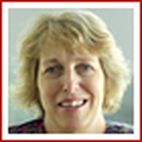
Patricia Cruse is the founding director of the University of California Curation Center (UC3). She “serves on the HathiTrust Strategic Advisory Board” and “the leadership team for the multi-institutional, NSF-funded DataONE initiative” (CDL). The CDL is working with the Library of Congress on the “Web-At-Risk Project,” which “enables librarians and archivists to capture, curate, preserve, and provide access to Web-based government and political information” (LOC).
Staff directory. (n. d.) California digital library. Retrieved from http://www.cdlib.org/contact/staff_directory/pcruse.html.
Web-At-Risk project. (n. d.). Library of Congress. Retrieved from http://www.digitalpreservation.gov/partners/web-at-risk/web-at-risk.html.
Staff directory. (n. d.) California digital library. Retrieved from http://www.cdlib.org/contact/staff_directory/pcruse.html.
Web-At-Risk project. (n. d.). Library of Congress. Retrieved from http://www.digitalpreservation.gov/partners/web-at-risk/web-at-risk.html.
Cathy Nelson Hartman

Cathy Nelson Hartman “established the CyberCemetery in 1997, in partnership with the US Government Printing Office to preserve the Websites of dead U.S. Government agencies and comissions. She leads a team of researchers and developers who are involved in a National Infastructure and Preservation Program grant titled “The Web-At-Risk. She is also the founder of “the Portal to Texas History program that has now helped more than 100 libraries and museums in Texas digitize their unique collections and make them available on the web” (University of north texas).
Faculty profile system. (n. d.) University of north texas system. Retrieved from
https://faculty.unt.edu/editprofile.php?pid=1091&onlyview=1.
Faculty profile system. (n. d.) University of north texas system. Retrieved from
https://faculty.unt.edu/editprofile.php?pid=1091&onlyview=1.
Margaret Hedstrom
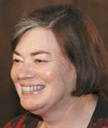
“Dr. Hedstrom is faculty coordinator of the Archives and Records Management specialization within the Master of Science in Information program at the U-M School of Information. She has published widely on many aspects of archival management, electronic records, and digital preservation and is writing a book on digital preservation to be published by MIT Press. Her current research interests include digital preservation strategies, the impact of electronic communications on organizational memory and documentation, remote access to archival materials, and cultural preservation and outreach in developing countries” (ICPSR).
Staff. (n. d.) Inter-university consortium for political and social research. Retrieved from http://www.icpsr.umich.edu/icpsrweb/ICPSR/staff/hedstrom.jsp.
Staff. (n. d.) Inter-university consortium for political and social research. Retrieved from http://www.icpsr.umich.edu/icpsrweb/ICPSR/staff/hedstrom.jsp.
Chris Rusbridge
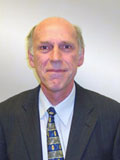
“Chris Rusbridge is Director of the Digital Curation Centre, funded by Joint Information Systems Committee (JISC) and the e-Science Core Programme to provide support services, development and research in digital curation and preservation, now in its second three-year funding period. Prior to his current appointment, Rusbridge spent five years as Director of Information Services at Glasgow University. There his responsibilities included the library and archives, together with IT, Management Information and Audio-visual services. For the previous five years, Rusbridge was Programme Director of the JISC Electronic Libraries Programme (eLib), a major digital library R&D Programme.”
Members. (n. d.) Blue ribbon task force. Retrieved from http://brtf.sdsc.edu/members.html.
Members. (n. d.) Blue ribbon task force. Retrieved from http://brtf.sdsc.edu/members.html.
John Spencer
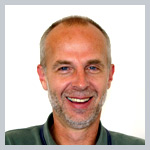
John Spencer is the president of BMS/Chace, an archival data management and migration service and has worked in the music recording business for over 25 years. He is working to find a solution to music preservation issues to help guarantee that archived music will be available and recoverable in the future. His business works in cooperation with the National Digital Information Infrastructure Preservation Program (NDIIPP) for the Preserving Creative America Initiative. John, as a member of the Delivery Specification Committee, helped publish a report of recommended file formats and storage carriers that can help with preservation and sustainability. He continues to work on music preservation challenges for the future.
http://www.digitalpreservation.gov/partners/pioneers/detail_spencer.html
http://www.digitalpreservation.gov/partners/pioneers/detail_spencer.html
David Bainbridge
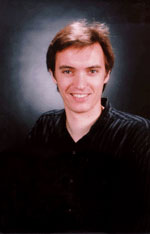
David Bainbridge is a senior lecturer at the University of Waikato in New Zealand. He is the co-director of the New Zealand Digital Library Research Project and has collaborated with the UN, the BBC and other national libraries. He is main career focus has been in multimedia systems, with an emphasis in computer music applications. He began this interest while working on his Ph.D topic, Optical Music Recognition, and it has continued to be a strong area of interest since coming to the University of Waikato. David has developed a web version of his PhD software as well as helping with work on other music indexes.
http://www.cs.waikato.ac.nz/~davidb/
http://www.cs.waikato.ac.nz/genquery.php?linklevel=4&linklist=cs&linkname=A_to_I&linktype=report&listby=Name&lwhere=unique_record_id=16&children=
http://www.cs.waikato.ac.nz/~davidb/
http://www.cs.waikato.ac.nz/genquery.php?linklevel=4&linklist=cs&linkname=A_to_I&linktype=report&listby=Name&lwhere=unique_record_id=16&children=
David Nichols
David Nichols is a senior lecturer at the University of Waikato in New Zealand. His specialties are in the areas of human computer interaction, digital library education, and open source software.
Some of his most recent publications include:
· Contextual queries express mobile information needs (2010)
Hinze, A.M., Chang, C. & Nichols, D.M.
Proceedings of the 12th International Conference on Human-Computer Interaction with Mobile Devices and Services (MobileHCI 2010), ACM. 327-336.
· Experiences with the Greenstone digital library software for international development (2010)
Nichols, D.M., Rose, J., Bainbridge, D. & Witten, I.H.
presented at the Digital Libraries for International Development Workshop (JCDL /ICADL 2010). 25 June 2010. Gold Coast, Queensland, Australia.
· Contextual queries and situated information needs of mobile users (2010) also in the Research Commons
Hinze, A.M., Chang, C. & Nichols, D.M.
Working Paper 01/2010, Department of Computer Science, University of Waikato.
· How to Build a Digital Library (2010)
Witten, I.H., Bainbridge, D. & Nichols, D.M.
Second Edition. Morgan Kaufmann.
· Collaborative information retrieval (2010)
Twidale, M.B. & Nichols, D.M.
in Bates, M.J. & Maack, M.N., (eds.) Encyclopedia of Library and Information Sciences, Third Edition. Taylor & Francis. 1: 1, 1080-1087.
University of Waikato, Department of Computer Science (n.d.). Retrieved from http://www.cs.waikato.ac.nz/~daven/pubs.html
Some of his most recent publications include:
· Contextual queries express mobile information needs (2010)
Hinze, A.M., Chang, C. & Nichols, D.M.
Proceedings of the 12th International Conference on Human-Computer Interaction with Mobile Devices and Services (MobileHCI 2010), ACM. 327-336.
· Experiences with the Greenstone digital library software for international development (2010)
Nichols, D.M., Rose, J., Bainbridge, D. & Witten, I.H.
presented at the Digital Libraries for International Development Workshop (JCDL /ICADL 2010). 25 June 2010. Gold Coast, Queensland, Australia.
· Contextual queries and situated information needs of mobile users (2010) also in the Research Commons
Hinze, A.M., Chang, C. & Nichols, D.M.
Working Paper 01/2010, Department of Computer Science, University of Waikato.
· How to Build a Digital Library (2010)
Witten, I.H., Bainbridge, D. & Nichols, D.M.
Second Edition. Morgan Kaufmann.
· Collaborative information retrieval (2010)
Twidale, M.B. & Nichols, D.M.
in Bates, M.J. & Maack, M.N., (eds.) Encyclopedia of Library and Information Sciences, Third Edition. Taylor & Francis. 1: 1, 1080-1087.
University of Waikato, Department of Computer Science (n.d.). Retrieved from http://www.cs.waikato.ac.nz/~daven/pubs.html
Nan Rubin
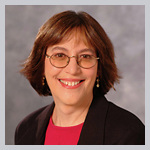
“Since its start in 2005, the NDIIPP Preserving Digital Public Television Project has made significant progress in building infrastructure, creating standards and obtaining resources, and much of the credit goes to its project director, Nan Rubin.”….. “Rubin is a driving force in working with the Library of Congress to preserve public television digital program content. Her NDIIPP project focuses on creating a consistent approach to digital curation among stations that produce national programming for PBS. In addition to Thirteen, there are three other partners in the project: PBS; WGBH in Boston; and New York University.”
Library of Congress, Digital preservation pioneers. Retrieved from http://www.digitalpreservation.gov/partners/pioneers/detail_rubin.html
Library of Congress, Digital preservation pioneers. Retrieved from http://www.digitalpreservation.gov/partners/pioneers/detail_rubin.html
Richard Pearce-Moses
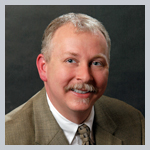
“Archivist Richard Pearce-Moses has the daunting challenge of building a system to curate the valuable digital records and data from the state of Arizona. By his example he is leading the way for 21st century archivists and librarians, and their future work with digital content.”
“Richard, who is deputy director for technology and information resources at the Arizona State Library, Archives and Public Records, and his team began with a project to capture state agencies’ publications from those agencies’ Web sites. The first challenge was to build a complete list of state Web sites. Using technology and clever sleuthing, they built a list of all URLs on some 50,000 Web pages on key state sites. A script analyzed those links to identify some 1,500 unique domains. Finally, the team checked each domain to see if it was a state agency Web site that needed to be captured.”
“The prototype system immediately identified some 200 state Web sites. A quarter of those sites had not been previously identified. Based on that success, programmers at the Online Computer Library Center (OCLC) developed the Domain Tool under a Library of Congress NDIIPP grant. Continued use of that tool has helped identify when sites become obsolete and has raised the total number of Arizona State Web sites identified to nearly 500.”….. “This work has resulted in an approach known as the Arizona Model, which adapts traditional archivists’ methods from the tangible world of paper assets to the intangible world of electronic assets.”
Library of Congress, Digital preservation pioneers. Retrieved from http://www.digitalpreservation.gov/partners/pioneers/detail_pearce-moses.html
“Richard, who is deputy director for technology and information resources at the Arizona State Library, Archives and Public Records, and his team began with a project to capture state agencies’ publications from those agencies’ Web sites. The first challenge was to build a complete list of state Web sites. Using technology and clever sleuthing, they built a list of all URLs on some 50,000 Web pages on key state sites. A script analyzed those links to identify some 1,500 unique domains. Finally, the team checked each domain to see if it was a state agency Web site that needed to be captured.”
“The prototype system immediately identified some 200 state Web sites. A quarter of those sites had not been previously identified. Based on that success, programmers at the Online Computer Library Center (OCLC) developed the Domain Tool under a Library of Congress NDIIPP grant. Continued use of that tool has helped identify when sites become obsolete and has raised the total number of Arizona State Web sites identified to nearly 500.”….. “This work has resulted in an approach known as the Arizona Model, which adapts traditional archivists’ methods from the tangible world of paper assets to the intangible world of electronic assets.”
Library of Congress, Digital preservation pioneers. Retrieved from http://www.digitalpreservation.gov/partners/pioneers/detail_pearce-moses.html
Michael L. Nelson

“In Michael L. Nelson’s view of digital preservation’s future, data is well behaved but promiscuous. Dead Web sites will be brought back to life, digital data will be born archivable, files will describe themselves, and data will spread freely among the masses for safekeeping.”
“Michael’s idealism stems from his work as assistant professor of Computer Science at Old Dominion University (ODU) in Norfolk, Va. His ODU team participated in the Library of Congress’s landmark Archive Ingest and Handling Test (AIHT) project, which researched the challenge of what Michael calls "archival forensics": ingesting, making sense of and improving the preservability of a set of donated digital archives.”
Library of Congress, Digital preservation pioneers. Retrieved from http://www.digitalpreservation.gov/partners/pioneers/detail_nelson.html
“Michael’s idealism stems from his work as assistant professor of Computer Science at Old Dominion University (ODU) in Norfolk, Va. His ODU team participated in the Library of Congress’s landmark Archive Ingest and Handling Test (AIHT) project, which researched the challenge of what Michael calls "archival forensics": ingesting, making sense of and improving the preservability of a set of donated digital archives.”
Library of Congress, Digital preservation pioneers. Retrieved from http://www.digitalpreservation.gov/partners/pioneers/detail_nelson.html
